Terrazzo might look tough, and it is, but even the hardest-working surfaces need the right care plan behind them. As promised in our last blog post, we’re diving deeper into what happens after installation. Whether you’ve just handed over a high-traffic lobby or you’re maintaining a bespoke floor in a private home, this guide walks you through each stage of the care cycle, with practical tips that work in the real world.
We’re covering smart cleaning, smart sealing, and how to give terrazzo a proper refresh when the time comes, all using FILA’s trusted care system.
A Quick Refresher on Terrazzo Types
Before we get into the care cycle, let’s take a moment to revisit the main types of terrazzo you’re likely to come across on site:
Cement-Based
This is the classic version. It’s heavier, soaks up more moisture, and you’ll often see it in older spaces, think libraries, museums, or historic public buildings. Because of its porosity, it tends to need more sealing and slightly more upkeep to stay in good shape.
Epoxy (Resin-Based)
A favorite in modern commercial projects, think airports, stadiums, and high-traffic retail environments. It’s lighter, more flexible in design, and less porous, but still benefits from regular cleaning and protection.
Bio-Based (Sustainable Resin)
It’s becoming a popular pick for eco-certified interiors, wellness spaces, and modern tech environments where low-VOC materials are a must. These newer blends are easy to clean and care for, as long as the system is followed consistently.
Precast
You’ll often find it used in modular pieces like stair treads, wall panels, countertops, and reception desks. Common in lobbies, galleries, and upscale hospitality settings. These elements are installed like stone but should still follow the same maintenance principles.
As you can see, not all terrazzo is the same, and that’s part of what makes it so versatile. You’ll find everything from old-school cement floors to modern resin mixes and even newer eco-friendly blends. Some types absorb more, some are easier to shape, but they all need the same core care: the right cleaning products, a solid sealer, and a consistent maintenance routine. FILA’s system is designed to make that easy, no matter what kind of terrazzo you’re working with.
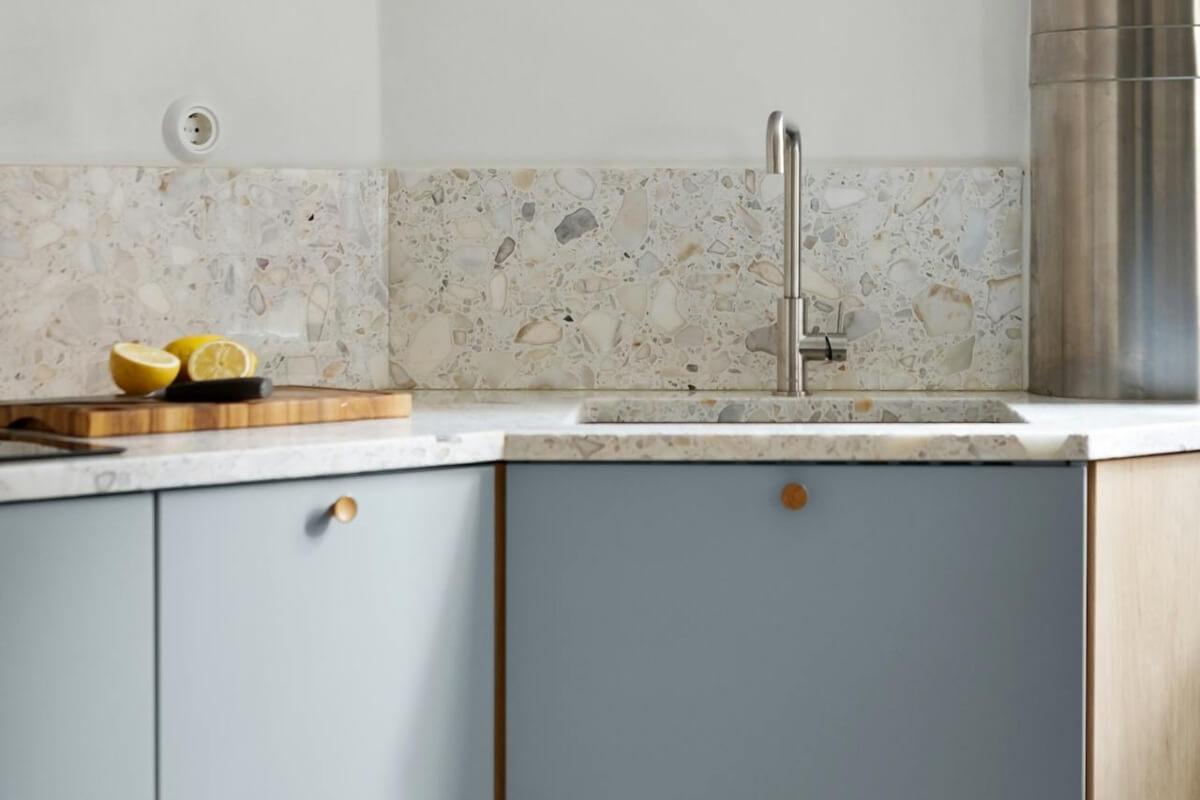
Before You Begin
Before any cleaning or sealing happens, it’s worth taking a moment to protect the surface during installation. Cement-based and matte-finish terrazzo can easily absorb moisture during grouting, which often leads to bonding issues or those hard-to-shift white marks.
To avoid that, apply a pre-grout treatment. PRW200 is a dependable choice for guarding unsealed, absorbent terrazzo during install. Or, for a go-to option many contractors in the U.S. rely on, CONTRACTOR’S CHOICE (available in gallon format) helps limit absorption and supports a strong, even bond. Taking this simple step early on can save time and trouble down the line.
Once the prep is done, the real care starts. Here’s how to ensure terrazzo stays protected and easy to maintain.
Initial Cleaning – Start Clean, Stay Clean
Once the terrazzo is fully cured and ready for handover, the first step is a thorough clean. This removes construction residue, dust, and site grime, setting the stage for proper sealer adhesion.
FILA’s Recommended End-of-Work Product:
CLEANALL Neutral All Surface Cleaner.
Dilution:
1:30 (½ cup per gallon of water).
Tools:
Scrubbing pad, sponge, or single-disc machine.
Pro Tip:
Work in small sections and rinse thoroughly; any residue left behind can affect how well the sealer bonds.
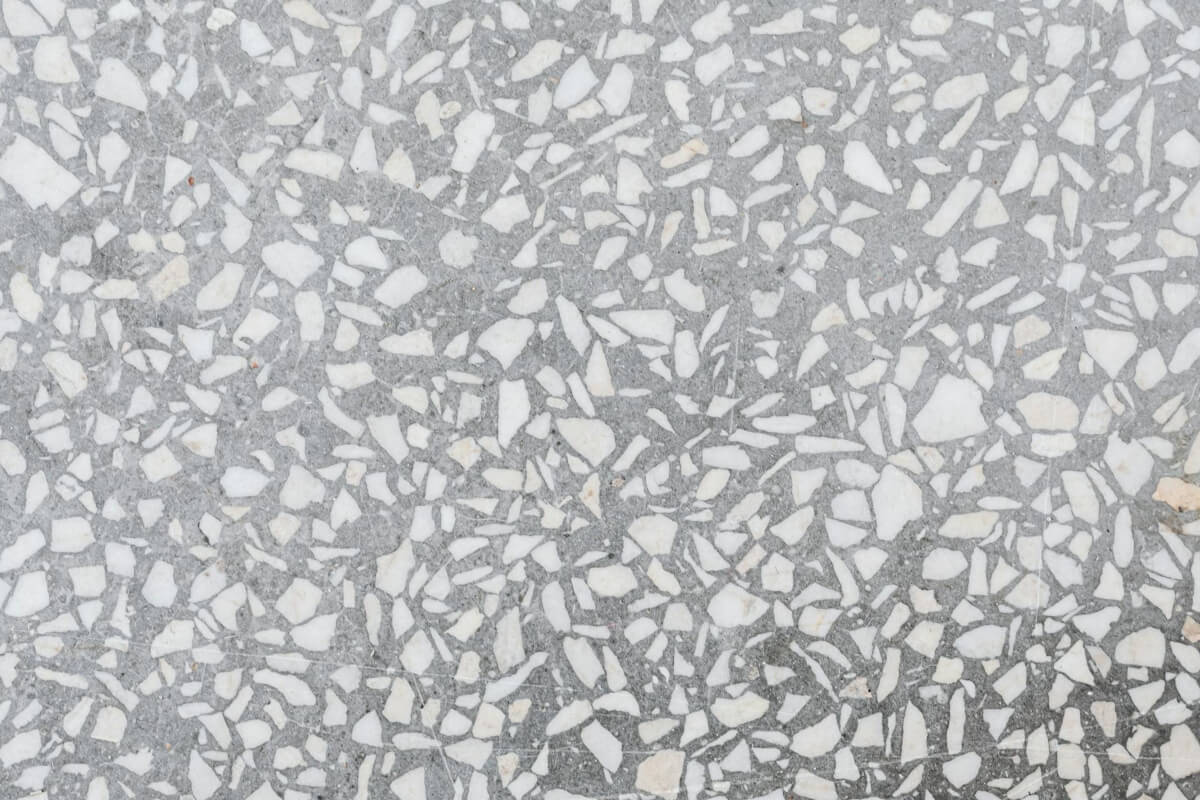
Sealing – Protect Against Stains
Once dry, it’s time to seal. MP90 ECO PLUS is a high-performance, water-based penetrating sealer that delivers long-lasting protection against water, oil, and everyday dirt, all without altering the look of the surface.
Dry Time:
Walkable after around 4 hours. Full cure in 8.
Application Tools:
Paint pad, lambswool applicator, or sponge, whichever suits the job best.
Coverage:
Expect up to 1,200 sq. ft. per gallon, though that’ll vary depending on how absorbent the surface is.
How to Apply:
Apply an even coat and let it sit for 10–15 minutes. Then, wipe away any leftover product with a clean cloth or lambswool pad. If you’re working with a more porous terrazzo, like cement-based, a second coat may be needed for full coverage.
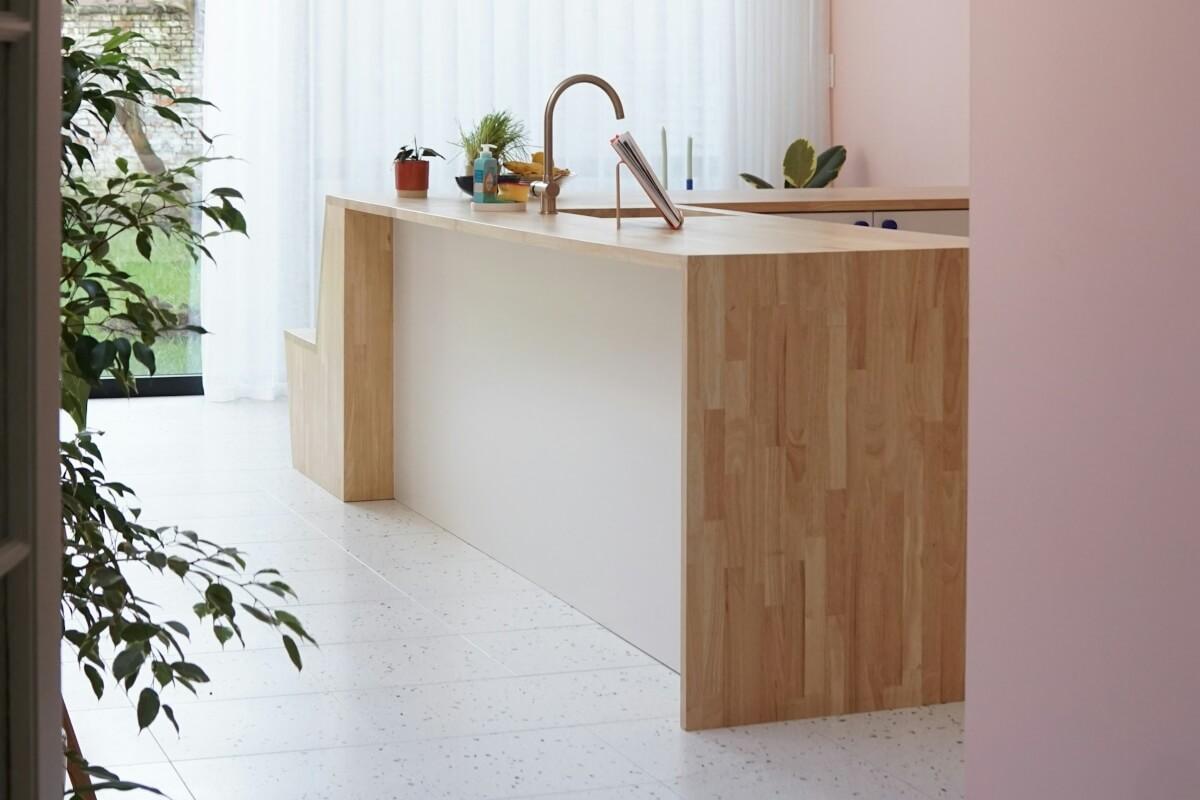
Optional Finish – Add a Wax Topcoat for Extra Control
On some projects, especially those where surface appearance or durability is a big deal, adding a wax topcoat can make a difference. FILA’s MATT and SATIN options give you a subtle sheen and add an extra layer of protection against wear and stains.
Why use Wax?
- Adds a removable coating between the surface and potential stains.
- Offers more control over the visual finish (matte or satin).
- Protects the underlying sealer by absorbing surface-level wear.
- Makes everyday maintenance easier.
How to Apply MATT or SATIN:
Dilute the product at a 5:1 ratio, roughly one 8-ounce glass of water to every liter of wax. On a clean, dry surface, apply one even coat using a fresh lambswool applicator. Give it about an hour to dry completely before walking on it.
Just a Heads-Up:
Neither are suitable for outdoor areas, damp environments, or anywhere with standing water (like bathrooms or showers).
This step isn’t essential, but it’s a great way to offer clients more choice, especially on high-spec projects where appearance and cleanability go hand in hand.
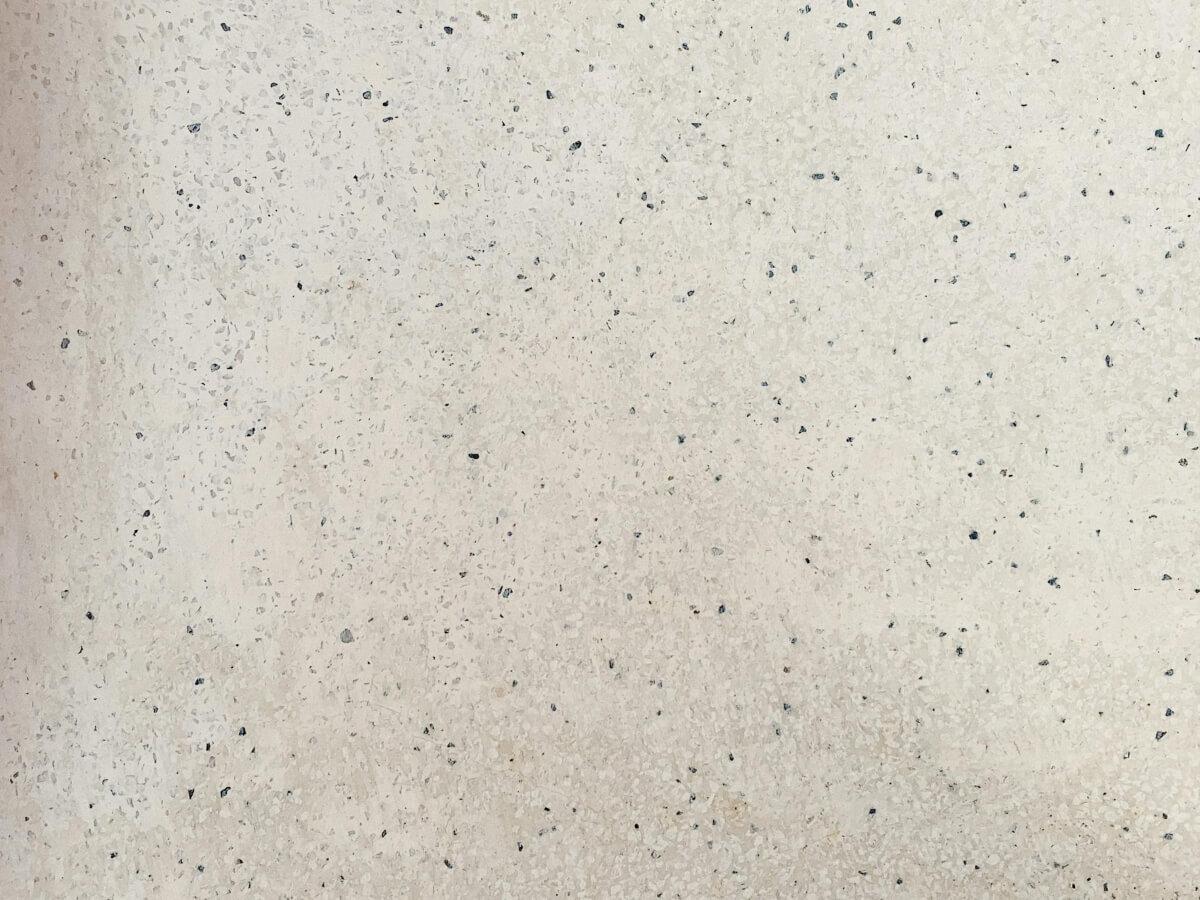
Routine Cleaning – Keep Terrazzo Looking Brand New
Once the floor’s been sealed (and waxed, if needed), day-to-day cleaning is simple, and sticking to the right products will make a big difference over time. Skip the bleach, steer clear of acidic or abrasive products, and stick with something that’s gentle but gets the job done.
FILA Recommends:
STONECLEAN – ideal for natural terrazzo surfaces.
How to Mix It:
- For everyday cleaning, dilute at 1:200, no rinse needed.
- For heavier buildup or greasy areas, use a stronger 1:30 mix.
Good to Know:
Using the right cleaner regularly doesn’t just keep the surface looking fresh: it helps protect the sealer and reduces the need for tough scrubbing down the line. A little bit really does go a long way.
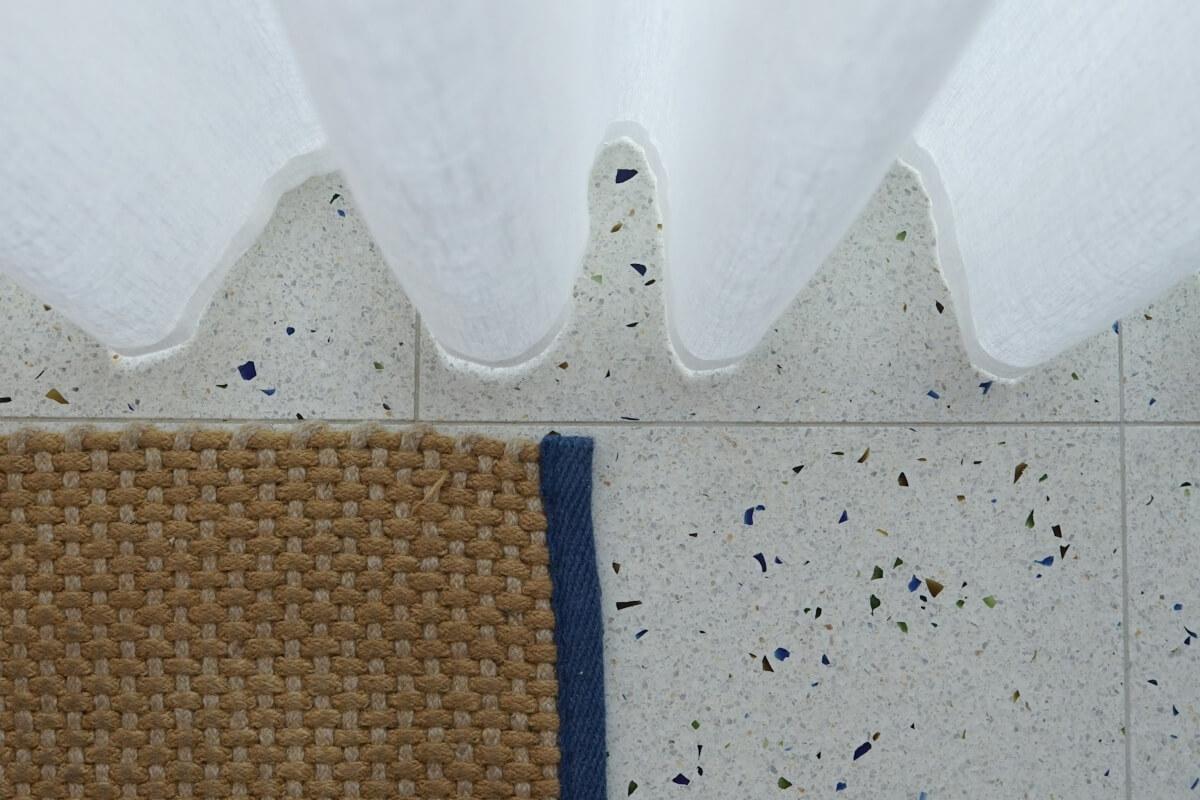
When to Reapply Wax (and When to Start Fresh)
Wax can offer an extra layer of protection for terrazzo, especially in high-traffic spaces, but like any coating, it needs regular upkeep to do its job properly. Here’s how to stay ahead of wear without overdoing it.
Light Maintenance
In busy environments like lobbies, retail spaces, or public buildings, reapplying a light coat of MATT or SATIN every 45 days helps maintain appearance and adds a fresh protective layer.
Before reapplying:
- Clean thoroughly to remove dirt, grease, or old wax buildup.
- Allow the surface to dry.
- Dilute the wax 1:10 (1 liter to 2.5 gallons of water).
- Apply one even coat using a clean lambswool applicator.
- Let the surface dry fully (about an hour) before reopening to foot traffic.
Annual Restoration
If your terrazzo is starting to look a little tired, a simple annual reset can make a big difference, especially in high-traffic areas.
Here’s how to bring it back to its best:
- Dilute PS87 at 1:5 and apply it to remove built-up wax or residue.
- Scrub the surface using a single-disc machine or a suitable pad.
- Vacuum up the residue and rinse thoroughly with clean water.
- Let the floor dry completely before applying a fresh coat of wax (diluted 5:1) with a clean lambswool applicator.
This quick routine helps restore clarity, refresh protection, and keep terrazzo looking sharp, no matter how busy the space.
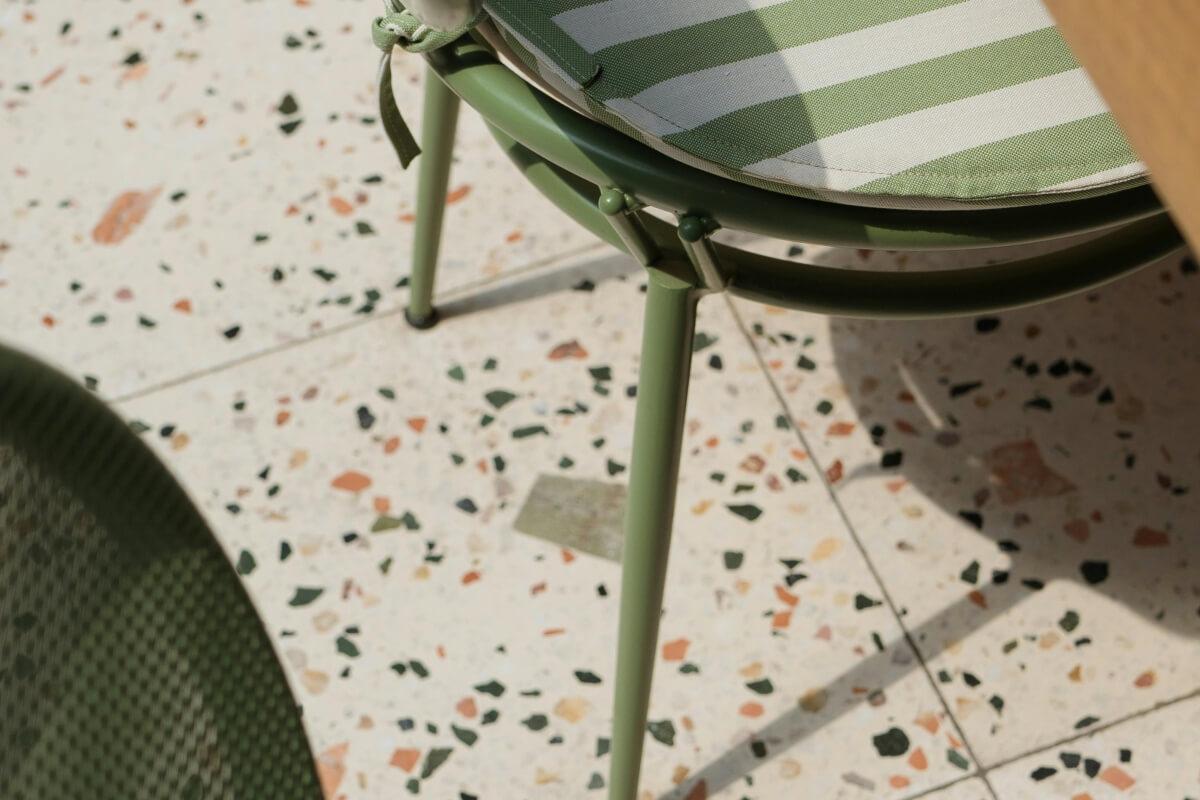
Planning a Terrazzo Project? We’re Here to Support You
Whether you’re specifying terrazzo for the first time or maintaining an existing floor, FILA is here to help. From choosing the right sealer to solving on-site challenges, our team understands the demands of real-world projects and the importance of getting every detail right.
Have questions? Reach out to our team; we’re always happy to offer guidance.
